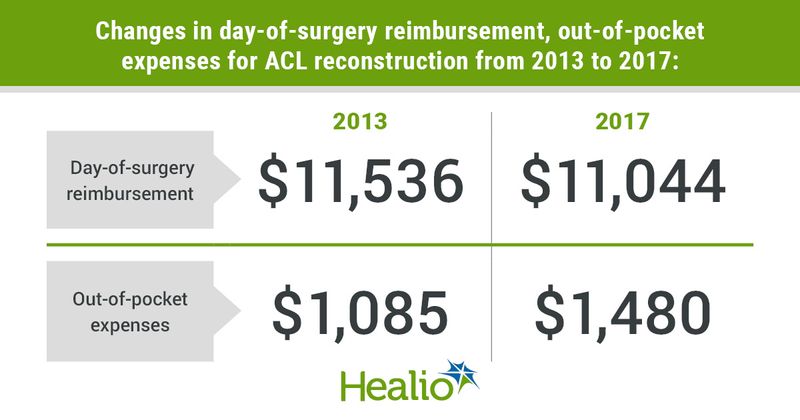Out-of-pocket expenses for ACL reconstruction increased despite decrease in reimbursement
Published results showed an increase in out-of-pocket expenses for patients undergoing arthroscopic ACL reconstruction despite a decrease in overall payer reimbursement.
“We found that for ACL reconstruction surgery, one of the highestvolume orthopedic surgeries performed in the U.S., out-of-pocket expenses for patients are increasing as they are forced to cover a larger percentage of their health care costs,” Shawn G. Anthony, MD, MBA, sports medicine and orthopedic surgeon at Mount Sinai, told Healio. “High-deductible health plans had the highest out-of-pocket patient costs.”

Using the IBM MarketScan Commercial Claims and Encounters database, Anthony and colleagues collected total patient payments and reimbursed claim totals in U.S. dollars among 37,763 patients who underwent outpatient primary arthroscopic ACL reconstruction between 2013 and 2017. Immediate procedure reimbursement, total health care utilization reimbursement and breakdown, and facility-specific reimbursements were considered the outcomes of interest, according to researchers.

Results showed a 4.3% decrease in day-of-surgery reimbursement from $11,536 in 2013 to $11,044 in 2017 as well as a 36% increase in patient out-of-pocket expenses from $1,085 in 2013 to $1,480 in 2017. Researchers found the highest expense for patients was day-of-surgery charges followed by physical therapy and MRI costs. Although total reimbursement for MRI decreased 22.5%, patient out-of-pocket expenses for MRI increased 166%, according to results. When compared with ACL reconstruction performed in an ASC, researchers noted ACL reconstruction performed in an outpatient hospital resulted in a 61% greater day-of-surgery expenditure for payers. However, researchers found a median total patient out-of-pocket savings of $11 for ACL reconstruction performed in an ASC vs. an outpatient hospital.
“Health insurers are cutting reimbursements while requiring that procedures be done in more economic facilities like ambulatory surgery centers, improving their profits but not sharing these cost-saving benefits with patients or providers,” Anthony said.

